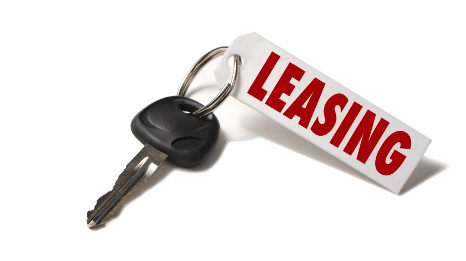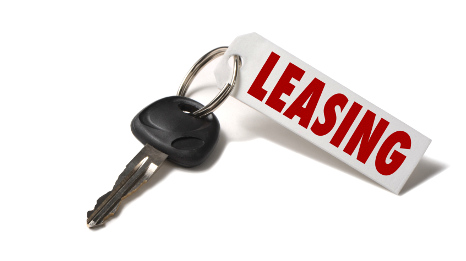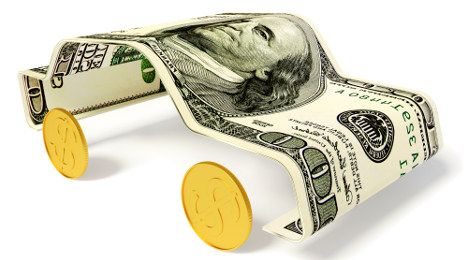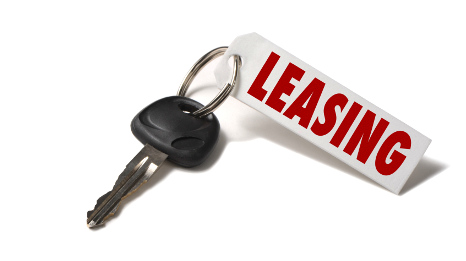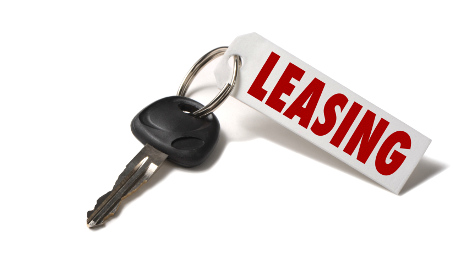With finance companies evidently thirsty for any reliable data and analysis about millennials that’s available, Experian and the National Automobile Dealers Association both chimed in on the topic of consumers born after 1980.
Earlier this week, NADA chief economist Steven Szakaly offered a cautious assessment of how millennials are going to impact the market, especially since he projected new-vehicle sales could reach an all-time high of 17.46 million units in 2016.
Szakaly explained that in part millennials “could present challenges to long-term growth in auto retailing.” The factor prompted him to note that after the industry potentially posts a record new-vehicle sales mark next year, the retailing of new models might soften back to 16.65 million units in 2017.
The NADA expert offered his assessment of millennials and made these predictions at the Center for Automotive Research's Management Briefing Seminars earlier this week in Traverse City, Mich.
“It will take four Millennials to replace the spending power of one Baby Boomer in the automotive retailing marketplace,” Szakaly said. “There’s also a wage gap between baby boomers and millennials, and stagnating wages for millennials, along with increasing vehicle-transaction prices, will pose challenges in the long run.”
Not long before Szakaly shared his perspective, Experian released key findings from a recent study meant to provide a glimpse into the credit management habits of millennials and show how coming of age in a challenging economy has had an effect on this generation’s credit profile.
Experian’s study showed that millennials appear to favor vehicle loans over leases, as there were 13.4 auto loans per one lease in the bureau’s analysis. Experian indicated this ratio is 9.3 to 1 for Generation X — individuals ages 35 to 49 — and 8.3 to 1 for baby boomers — consumers age 50 and older.
However, Experian also determined vehicle leases tend to be a product that may attract older consumers because they tend to have higher and more established credit. Consequently, Experian said its findings from the analysis showed that the older millennials were, the more likely they were to have a vehicle lease, rather than their younger counterparts.
That segment of Experian’s study slightly differed with a recent analysis generated by Edmunds.com, which reviewed registration data provided by Polk and determined that leasing has accounted for 28.9 percent of all new-vehicle purchases so far this year by millennials who range in age from 18 to 34.
Even with millennials taking a little longer to establish some forms of credit compared with previous generations, Experian insisted their sheer numbers make them an important and growing market segment. When comparing credit usage of a more youthful generation X population, Experian found that there appears to be some interesting trends in origination patterns.
Auto loans make up 14 percent of all recently opened accounts for millennials, compared to 1 percent for their generation X counterparts at the same age in 1998.
“We’re seeing that millennials are purchasing cars at a much earlier point in life, which is giving them the opportunity to build credit a little differently than previous generations,” said Rod Griffin, Experian's director of public education.
“This is a critical time for members of this generation as they are learning to use credit as a tool,” Griffin continued. “With so many financial education resources available to help them, we believe that members of this generation are more empowered and informed than members of other generations and are starting their adult lives off by building strong credit as they set out on their own.”
Similarly, Experian indicated student loans make up 24 percent of all new accounts for millennials, compared to 20 percent for their generation X counterparts at a comparable age.
Experian’s study also shows that fewer millennials are using bankcards, with only 27 percent of their recently opened accounts being bankcards, compared to 46 percent for their generation X counterparts at the same age.
“Given the significance millennials play in financial services and the credit marketplace, it is crucial to understand this influential consumer segment and how they use credit as a tool," said Michele Raneri, vice president of analytics and business development at Experian.
“While this generation may not look like they are on the right track financially, it’s important to keep in mind that credit scores are built on credit experiences, and while this generation has been slower to use credit, they have plenty of opportunities to build a positive credit history,” Raneri went on to say. “The best way to do that is to understand credit before using it.”
A recent analysis from Edmunds.com indicates that in addition to being among “the biggest factors that are making it easier for shoppers to afford more expensive vehicles” (along with cheaper credit), new-vehicle lease penetration is on track to reach an all-time annual high.
What’s more, the same Edmunds analysis of financial conditions found that leases in May had average monthly payments that were $70 cheaper than the average payment on a financed vehicle.
A similar affordability factor seems to bearing out in June, according to Swapalease.com.
The site’s Wantalease.com new lease marketplace had 16 monthly payment offers of $200 or less this month. In fact, six of those 16 had monthly payments of less than $160.
“It’s not uncommon to see many monthly lease offers under $200, however it is surprising to see the high quality of vehicles seeing such aggressive deals currently,” said Scot Hall, executive vice president of Wantalease.com. “There continues to be a nice mix of cars and trucks, as well as luxury makes with deals that are attractive to virtually all budgets.”
Much of Hall’s sentiment was noted in Edmunds’ analysis.
But one twist to these findings that Edmunds discovered: while trucks and SUVs are getting a shot in the arm, the same can’t be said for the luxury market. The majority of luxury segments have had relatively flat consumer appetite numbers the past two years.
“Today’s car shoppers are taking a step or two beyond the more financially conservative choices made in recent years, but we aren’t generally seeing the mainstream buyers reach into luxury the way we did before the economic crisis,” said Edmunds chief economist Lacey Plache said. “That was a time when many aspirational shoppers stretched their finances to get a high-status nameplate, now they are instead buying mainstream vehicles with tech options and creature comforts that allow them to spoil themselves just a little.”
However, Edmunds did point out that luxury buyers have shifted toward the higher price points of the luxury spectrum, like mainstream buyers have done on the mainstream side.
Going back to the Wantalease data, here are some of the highlights of those $200 or less deals:
- Volkswagen Jetta S: $139 per month
- Chevrolet Cruze LT: $147 per month
- Chrysler 200 Limited: $149 per month
(These three are offered at 24, 36- or 39 months)
- Chevrolet Equinox 2WD LT: $189 per month for 39 months
- Ford Escape FWD S: $199 per month for 24 months.
Though not on the list of 16 vehicles at $200 or less, Swapalease did note that there were five popular luxury models with monthly payments at $350 or less, including the Acura ILX at $229 per month and the Audi A3 1.8 Premium at $319 per month.
Despite site executives still taking a cautious approach about the impact subprime applicants and millennials carrying student loan debt, Swapalease.com highlighted lease credit approvals for January started out on a high note.
Swapalease.com reported approvals finishing at 75.0 percent for the month. The site acknowledged the jump in approvals illustrates the ongoing volatility in the indicator after December saw only 60.9 percent approvals.
Over the last three months, the auto lease credit approval rate has been slightly above average at 72.5 percent, compared with the overall 2014 rate that saw 69.0 percent approvals.
Several areas continue to present mild concern for Swapalease.com executives, including a growing number of younger shoppers with student debt, as well as millennials who may not have the right amount of credit history to qualify for a lease.
A third area Swapalease.com executives are monitoring is the volume of subprime shoppers entering the market.
According to a recent report by Equifax, nearly four out of every 10 approvals for auto loans, credit cards and personal borrowing were given to subprime borrowers in 2014. And while the credit reporting agency shows that these borrowers are improving their credit scores three years after taking out their loans, Swapalease.com executive vice president Scot Hall insisted leasing remains a challenge for subprime customers.
Hall noted A larger number of subprime customers have also entered the Swapalease.com market, with many seeing declines from banks that scrutinize their credit when applying to take over someone else's existing car lease contract.
“It’s difficult to get a read on the clear direction for car lease credit approvals right now, but we believe in the overall picture we will continue to trend in an upward projection,” Hall said.
“January has traditionally been a strong month for lease approvals, so we aren’t terribly surprised that the number saw a bounce back from December and end-of-year levels,” he added.
In what the Chicago Automobile Trade Association is calling a rare triple winner — good for consumers, good for business, and good for government — the Windy City’s dealer organization highlighted four components of Illinois’ revamped state tax program associated with leased vehicles.
Before the tax law change that went into effect Jan. 1, lessors paid use tax on the entire value of the leased vehicle, and the lessee did not pay any sales tax. Under the new law, CATA explained tax on leases longer than one year is applied to each monthly payment as it is in most other states in the country.
According to association officials, the result is consumers pay less tax, dealers lease more vehicles, and the Illinois Revenue Department gets more money from the increased leasing activity.
The changes impact the tax base, calculation and reporting methods for vehicle leases in four ways:
• Tax due at lease origination: Lessors pay tax on all amounts due under a lease at the time the lease is entered into. While not exhaustively defined, this includes down payment, acquisition fees, lease fees, monthly payments, and potentially other charges.
• Subsequent tax obligations: Lessors collect tax from lessees on amounts not calculated at the time the lease is entered into, such as excess mileage and wear and tear charges. This could also include value adjustments made on net leases, which make up the difference between the actual value of the vehicle at the end of the lease and the stated residual value at lease inception. Under the previous rules, no sales tax was paid on those charges.
• Advance trade credits and third-party trade-ins: Trade-ins from the lessor (advanced trade-in credits) or from the lessee (under a third-party trade-in credit) are eliminated and do not reduce the tax base of the vehicle.
• Lease-end credit: Previously, lessors who paid tax on previously leased property (including vehicles) were entitled to a credit for the amount of sales tax paid when the vehicle later is sold to an Illinois customer. Because lessors no longer will pay tax on the entire vehicle cost for leases, the credit will not apply to these leases.
Gov. Pat Quinn signed House Bill 2317 last May that created this possible scenario for an individual who is interested in leasing a vehicle in DuPage County, a vital part of the Chicagoland market.
Prior to Jan. 1, officials calculated a DuPage County resident leasing a $27,000 vehicle for 36 months with no money down would expect to pay about $1,890 in state taxes. After Jan.1, they figured that same customer would pay just $945 in taxes — assuming the vehicle had a residual value of 50 percent. That’s a savings of $945, amounting to more than $25 per month.
The savings get even greater on 24-month leases or more expensive vehicles. For example, a DuPage County resident leasing a $60,000 vehicle for 24 months with a 65-percent residual prior to Jan. 1 would pay $4,200. After Jan.1, that same customer would pay $1,470 in taxes, saving $2,730 in taxes over two years.
“The CATA worked years for this change in order to increase leasing activity for our dealers,” CATA chairman Colin Wickstrom said. “Now that the change is here, the association is ready to help our dealers capitalize on it.”
The CATA rolled out an aggressive advertising campaign to make sure consumers are aware of the change. With contributions from every manufacturer in the market together matching the CATA’s buy, the campaign is worth more than $1 million.
With tag lines of “The Lease You Can Do” and “More Car, Less Money,” the campaign emphasizes the newfound benefits of leasing a new or used vehicle in Illinois. The campaign wasted no time, airing New Year’s Day spots during the Tournament of Roses Parade and the Rose Bowl football game that followed.
The television ad buys are slated to show more than 2,000 messages during the year’s first quarter, delivering nearly 125 million gross ad impressions among adults, whose target audience will see the spots an average 19 times each over the next three months.
About 93 percent of the campaign’s target group will hear radio messages an average 11 times each through March. Digital advertising also is part of the mix.
“The Chicago metro market has never had good lease penetration because of the way the state taxed vehicle leases,” Wickstrom said. “With this change in the tax law customers will be able to afford more car than ever — perhaps lowering their monthly payments at the same time.”
Nationally, the number of new-vehicle owners that are leasing has grown to 26 percent — a figure that has doubled over the last five years, according to data from Experian Automotive. Wickstrom pointed out Illinois has lagged well behind at just 14 percent.
Wickstrom also mentioned leasing rates in Chicago are among the lowest for any metro market in the United States. By comparison, New York metro has a lease rate of 50 percent and Cleveland, 48 percent.
CATA president Dave Sloan insisted the change in the way vehicle leases are taxed in Illinois should make leasing a much more attractive option for new-vehicle shoppers while enhancing what dealers deliver into state coffers. Sloan noted Illinois franchised dealers accounted for $28.4 billion in total retail sales in 2013, which was 15 percent of the state’s total.
“The CATA, along with the Illinois Auto Dealers Association, worked to show the Illinois Department of Revenue that changing the way the state collects tax on vehicle leases would not only be good for the consumer, but would result in more revenue for the state,” Sloan said.
Perhaps a factor helping to push outstanding auto loan balances toward the $1 trillion threshold is if the transaction price activity spotted by Kelley Blue Book analysts maintains the current rate.
KBB reported on Monday that the estimated average transaction price (ATP) for light vehicles in the United States was $34,367 in December. New-vehicle prices increased by $842 (up 2.5 percent) from December of 2013, while rising $556 (1.6 percent) from November.
Kelley Blue Book senior analyst Alec Gutierrez determined this reading is the highest month on record for average transaction prices.
“If you look at the strength we’re seeing today, you have to remember that it’s not just a consumer buying a Toyota Camry LE equipped with navigation is paying 3 or 4 percent more than they were a couple of years ago,” Gutierrez said during a conference call with the media on Monday. “That’s part of it. Individual model lines and trim lines are inching up in terms of MSRP and what consumers are actually paying.
“But it also speaks to the mix,” he continued. “Trucks, CUVs, SUVs and luxury cars have done extraordinarily well. That’s really been the core driver of ATPs.”
After talking about vehicles, Gutierrez turned his attention to what finance company executive and portfolio managers might find interesting.
“From a lending standpoint, it’s not as though we’re seeing cars transact above MSRP or anything along those lines,” he said. In terms of lending standards, I don’t necessarily see any lenders tightening up. If we track default and repossession rates, there have been slight increases here and there in some of the lower credit tiers but for the most part, things are very stable and healthy.
“It will be interesting to see if we see that overall outstanding auto loan level pass the $1 trillion mark. It seems as though that’s a possibility,” Gutierrez continued. “As far as the implications there and what that could mean for the industry as a whole, that’s hard to say.
“You could argue there’s increased risk should industry quickly change direction. But knowing that there’s so many people that account for all of those loans, it would take something just absolutely wide spread and astronomical like we saw in 2008. That’s to say it’s not impossible to see the sort of defaults that would really impact and budge that number,” he went on to say.
“From my perspective, I don’t really see any sort of changes or significant shifts. But’s it’s definitely something to keep an eye on,” Gutierrez added.
According to the latest Equifax National Consumer Credit Trends Report, the total number of outstanding auto loans year-to-date in November came in at more than 70.0 million, the highest level in more than five years.
That amount of paper in finance company portfolios as of November pushed outstanding balances 9.6 percent higher year-over-year to $965.0 billion.
Earlier in Monday’s call, Gutierrez also touched on how interest rates and leasing trends are coupled together and what the industry might see in 2015.
“You look at one of the key drivers of industry sales — for utilities, small cars, luxury cars, you name it — is leasing,” Gutierrez said. “The last several months we’ve been tracking closer to 29 to 30 percent lease penetration rates. That’s only made possible because we have such historically low interest rates coupled with a historically high used-car market.
“When you look at the possibility that interest rates might increase this year — although we’ve heard that for the last year or two — and if the used-car market takes a bit of hit which we expect in the next couple of years with the lease activity we’ve seen, that’s where you’ll potentially see some downward pressure on sales and demand,” he continued. “With ATPs as high as they are, you lose some of those options that help offset those rising transaction prices.”
Since the last Global Asset and Auto Finance Survey, the global economy looked to be entering a period of sustained growth and expansion — indicating good news for the auto and equipment finance industry. However, it has not all been plain sailing. Although it can be said the industry is on a firmer footing than for some years, there remain headwinds.
Take the world’s largest economy and largest asset finance market — the U.S. After a rocky start to 2014, owing to severe weather conditions, the economy picked up and with it hopes that leasing volumes would continue to surpass previous highs. Although the stock markets are still performing well, investment intentions have been muted by the ongoing gridlock between President Obama and the now Republican-controlled Congress.
Leasing industry data shows that, while the industry is performing well, the rate of growth has eased as the year has gone on.
Europe meanwhile is a bag of mixed messages. The economic recovery seems to be well underway in the U.K., and with it the equipment and auto finance markets are thriving. Elsewhere, research suggests that many European markets have turned the corner after the recession, only to be hit recently by further uncertainty — partly due to concern over sanctions against Russia which could rebound on EU markets, particularly Germany.
Nonetheless, the outlook in Europe for new business volumes in equipment leasing for the second half of 2014 have been mainly positive. And, despite the tremors in the developed Western European markets (the U.K. excluded), Eastern European countries, now emerging from many years of centralized control and with a burgeoning middle class, are proving to be one of the leasing industry’s high spots.
In many developed markets, government austerity, combined with regulatory changes and new regulatory requirements, is making life harder for bank-owned lessors which face cost and compliance challenges that put them at a competitive disadvantage relative to independent lessors.
But herein lies a bright spot. In the U.S., for example, data from the Equipment Leasing and Finance Association (ELFA) indicate that, after lagging for several years, independent lessors led the industry in new business volume growth rates. Captives have also performed relatively well.
Another bright spot in the U.S. is that auto leasing is at its most popular and it is expected that market conditions will support continued leasing popularity in the short term, although the momentum could start to slow next year. Similar positive indicators are present in the U.K. and other markets.
Much depends on China — how far and how hard will its economy slow — as demand from China directly affects many other national markets, not least in Asia Pacific. China’s leasing market is already big and has virtually unlimited potential. It’s hard to see its ballooning middle class relaxing demand for auto finance. And while the medium-term outlook for asset finance in India is subdued, there are healthy prospects for Asian markets such as Korea and Indonesia.
Another challenge, certainly for developed markets, is that potential lease accounting changes could have a significant effect from a reporting and process perspective for both lessors and lessees. This could cause significant expense, as well as business disruption.
On a final positive note, there are indications globally that financial institutions are working on innovative approaches to help businesses unlock capital tied up in plant and equipment for investment. Lenders are also looking at new ways to help companies whose customers increasingly want to pay for services and equipment based on their usage, rather than outright ownership.
Ed White is group chairman at White Clarke Group
The U.S. may at last be pulling out of recession. But there are still headwinds, not least of which emanate from Washington, D.C., as the seemingly intractable gridlock in Congress is doing nothing to reduce uncertainty in the domestic markets.
This impacts all businesses and entrepreneurs, and the equipment and auto finance and leasing markets are affected as much as any. Businesses want to get on with what they do best — doing deals, expanding, making money. But confidence, and with it investment, is being constrained by the congressional impasse, which does not look like it is going to be solved by the upcoming elections in November.
Other variables include what may happen following the final ending of quantitative easing (QE) — the federal program of asset purchasing — and the prospect of interest rates rising afterwards after sitting at a near-zero level, and possible growth constraints on larger corporations that are inevitable in the later stages of the current business cycle.
Business does not need another brake on momentum, particularly as 2014 has had its ups and downs. It started with a surprise down, as extreme winter weather contributed to a sharp contraction in the economy, but the second quarter produced a strong rebound and, although a similar rate of growth cannot be expected to be maintained, the projections are for a steady, albeit gradual, increase from here.
Meanwhile, the stock markets have gone up: the important S&P 500 has risen by around 8 percent in 2014 and 20 percent in the last 12 months, and cleared the psychological 2,000 barrier more than once. However, the markets too have suffered from volatility, especially among small caps, which for many observers indicates an unwelcome degree of uncertainty. Caution affects investment planning, which in turn depresses capital expenditure on replacing equipment, but the underlying economy is still doing pretty well, and there is undeniably a great deal of pent-up demand.
Opportunities in Financing
The equipment and auto finance and leasing industry in the U.S. also suffered a decline in relative terms in early 2014, but, like the economy, has picked up since and is registering about 4 percent growth in new business volume (NBV) year-on-year over 2013 so far, according to the Equipment Leasing and Finance Association (ELFA), and this trend is expected to continue. ELFA research shows that equipment finance NBV grew a healthy 9 percent-plus in 2013; however, that rate is down on the previous two years.
A real highlight has been the auto sector, which has accelerated through this year with total light-vehicle sales reaching consistent levels not seen since before the credit crunch. Concerns have been raised regarding the possibility of a subprime bubble being inflated similar to the mortgage bubble that ushered in the financial crisis, but the auto market does not bear close comparison with real estate.
Leasing is playing an increasingly important role in auto finance. The upward trend over the last five years has continued impressively in 2014, with leasing now accounting for over 30 percent of all new vehicles financed.
Banks are still the main providers of finance in the auto sector, as elsewhere, but captives have grown their share considerably, and now represent more than a quarter of the total auto loan market. Dealers are thriving off the back of this. An example of successfully exploiting the boom in both leasing and subprime has been Chrysler, which reported 20 percent year-on-year sales gains for August and credited its recent growth to stepping up activity in both these areas.
Expanding an Already Mature Market
Banks are increasing market share in equipment leasing, as they appreciate the value provided by leasing in recent years. There is a question regarding the risk of market commoditization, and where innovation can occur. However, experts interviewed for the country survey expect few such problems and are confident that the market has ample room for expansion.
The equipment finance market in the U.S. may be the world’s largest and most developed, but it is part of the largest global economy, and if the entire market of goods that could be financed is taken into consideration, there is an awful long way to go before equipment finance runs out of road.
Opportunities are currently seen in transportation, construction and technology – all three of which are indicators of a growing economy. A longer-term prospect is the renewable energy market, which has been boosted by government subsidies that may or may not survive a congressional realignment, but the whole domestic energy sector has been transformed in recent times and offers financing opportunities for cost-effective alternative energy solutions.
What the market needs as much as anything is confidence, particularly concerning federal legislation or the preferred lack of it, the result of which will be a return to consistent investment. The undeniable fact is that the U.S. remains a very good place to do business.
Brendan Gleeson is group executive vice president of White Clarke Group.
While in the installment contract space subprime financing is at levels not seen since 2006, Swapalease.com is finding that an influx of subprime consumers applying to the leasing sector is “muddying the approval waters a bit.”
Site analysts reported their lease credit approvals during the month of September dropped down to 64.5 percent, falling after reaching into the low 80-percent range during July and August. They reiterated the approvals rate is an important indicator of how successful car shoppers are at getting approved for a vehicle lease.
Swapalease.com explained the approvals rate has witnessed noticeable turbulence in recent months with subprime shoppers being the likely trigger.
The site determined year-to-date approvals are at 67.8 percent through the end of September, slightly off the 70-percent rate that is considered “healthy” by historical trends in the Swapalease.com marketplace.
Compared to the same month a year ago, which saw just 63.0 percent approvals, the trend continues to show growth in overall approvals, site officials indicated.
Swapalease.com executive vice president Scot Hall acknowledged subprime shoppers have weighed heavily on lease approvals throughout 2014. Hall explained credit is the lifeblood of leasing, and each shopper on the Swapalease.com marketplace must have his or her credit approved by the bank holding the existing lease available for transfer.
“The appetite for credit expansion is fueling this desire to shop for a car, regardless of credit status,” Hall said.
“We continue to see a rise in the number of applicants seeking to take over a car lease through the Swapalease.com marketplace,” he continued.
“The subprime applicants are certainly muddying the approval waters a bit, and we expect this trend will continue into the near future as these shoppers look to find ways to obtain new transportation,” Hall went on to say.
Hall also mentioned subprime shoppers have grown in numbers on the Swapalease.com marketplace as they seek alternate channels for vehicle shopping.
“Many are unsatisfied with loan options at the retail level and look for ways to take over an existing lease through Swapalease.com,” he said.
In a monthly-payment driven world, leasing is on the rise to points never seen before, especially for contracts connecting new vehicles and consumers with prime credit. But Swapalease.com executive vice president Scot Hall gave the industry a question to ponder. What if finance companies considered leasing used vehicles — in particular, certified pre-owned models — to subprime consumers, particularly ones who are on the higher-end of the non-prime category?
Used-vehicle leasing still remains a small part of the industry’s book of business. Experian Automotive indicated used-vehicle leasing constituted just 3.19 percent of the entire leasing market in the second quarter, down slightly year-over-year. CNW Research determined there have been 692,218 used leases originated through the first eight months of this year. CNW’s data showed there were 705,180 used-car leases written through August 2013. In eight months of 2012, there were 705,027 used leases.
While those metrics all show slight softening for used-vehicle leasing, Hall again reiterated the potential that’s out there stemming from two key ingredients:
— Continuing rise in off-lease wholesale volume based on contracts written in the past two years.
— A population that has bruised credit but still the ability to make monthly payments.
“It would be a great thing for the entire leasing market overall, and looking more holistically, the entire auto industry overall. There are a lot of people who are going to be considered subprime that are still able to make a monthly payment, and they’ve just had a few hiccups and aren’t bad people at the end of the day,” Hall told SubPrime Auto Finance News during a recent phone interview.
“I think a lot of people lose sight of the fact that leasing is simply an alternative form of financing. You may choose to do a long-term installment loan; you may choose to do a short-term lease. But they’re all just options as a way to pay for that vehicle,” he continued.
“Why there hasn’t been more focus on subprime in the leasing segment, specifically, in the past? Frankly, that seems a little bit unusual that hasn’t been explored further,” Hall went on to say.
Hall also mentioned how the latest metrics from Swapalease.com shows the demand for leasing from subprime consumers.
Swapalease.com reported lease credit approvals during the month of August came in at 85.7 percent, the highest monthly level of 2014 and besting July’s rate of 81.0 pecent.
August marked the second straight month of improving lease credit approvals, and well above the 70-percent mark considered healthy on the Swapalease.com marketplace.
After dipping into a year-to-date average low of 64.5 percent in June, the annual tally is now up to 68.5 percent. The company believes a rise in subprime shoppers weighed down the credit approvals rate in 2014, as more shoppers in this credit profile have applied for a lease.
“We deal with a lot of different leasing companies, some directly, some indirectly. Each of those leasing companies has a little bit different credit process,” Hall said. “In most scenarios, the individual applying for credit is going to know within one or two business days if they’ve been approved to take over a lease. Some leasing companies as a result of not having as much focus on the lease-transfer process may take a little bit longer. It’s going to be a combination of notified directly or notified by mail. Really no differently than if they were looking into a loan or a lease initially at the dealership level.
“When we have a client who contacts us … it’s not uncommon for someone to think they don’t have the credit to do this,” he continued. “We don’t want to simply sign them up for our service and charge them a membership fee, knowing they don’t have a lot of chance for success to take over a lease. Instead, we want to push them over to our partner, ConsumerDirect.com.”
Swapalease.com works to help subprime shoppers elevate their credit profile through a program called Smart Credit and sponsored by ConsumerDirect.com.
“It’s a process and service that can help an individual learn more about what needs to be done to improve their credit and rebuild their credit and point them in the right direction,” Hall said.
Once these shoppers revitalize their credit they can re-enter the Swapalease.com marketplace and reapply for a lease assumption.
“We definitely have had success stories. At the end of the day, it’s a matter of severity,” Hall said. “Prime credit by most definitions is a 700 credit score and higher. Of course the higher the number, the better the credit. Anybody south of 700 in that range is going to be considered subprime.
“Generally speaking when someone has a score of 675, what they need to do to clean up their credit history and their portfolio is a lot less cumbersome than someone who might have a score in the high-500 range,” he continued.
“There’s really not a one-answer-fits-all. Depending on what someone has done in the past or more accurately what someone has not done in the past. It may take them longer to clean up that credit view,” Hall went on to say.
While Hall acknowledged it’s going to take quite an industry shift for leasing associated with subprime consumers or used vehicles to hit level experienced with new vehicles and prime customers, Hall insisted the potential is there to expand on the numbers seen by Experian and CNW.
“You’re going to have different levels of credit enter the market when you have that kind of growth,” Hall said.
Staff Writer Joe Overby contributed to this report.
Ally Financial launched a new tool this week to help consumers decide whether buying or leasing might be their best option when shopping for a vehicle.
Available for free on Ally’s website, the company explained the interactive buy or lease tool can help arm consumers with the right information to start the vehicle-financing process.
The tool leads consumers through five simple questions on their automotive and driving needs, including how many miles they drive annually, down payments intentions and maintenance, as well as preferences on how long to keep a vehicle.
After completing the questions, Ally indicated consumers will learn which option may best fits their needs — buying, leasing or the Ally Buyer’s Choice product. Consumers can explore additional information on these financing options, or take what they’ve learned and head into the dealership equipped with knowledge on the different choices available.
“Well informed consumers do their research and come armed with a game plan when looking to finance a vehicle,” said Andrea Riley, chief marketing officer of dealer financial services for Ally.
“Knowing what types of options are available before even stepping foot in the dealership can help consumers feel more confident that the decisions they are making are the right ones for their financial situation,” Riley continued.
The interactive tool is available for all consumers on Ally’s website at www.ally.com/auto/personal/explore-financing-options/.


